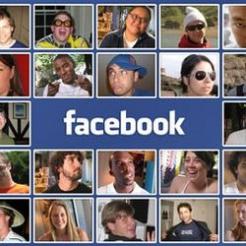A four-year study into the use of social media by non-profits in the USA has revealed that Facebook remains the dominant medium, but is proving fruitful in fundraising terms for "just a select few".
The Nonprofit Social Network report for 2012 yielded responses from 3,522 non-profit professionals from small volunteer led groups to very large multi-nationals based in North America. Conducted by the Nonprofit Technology Network with Common Knowledge and Blackbaud, the ongoing study is now in its fourth year.
The results showed that Facebook remains dominant over other social networks with 98 per cent of respondents holding a presence on the site, compared to 74 per cent on Twitter, 66 per cent on YouTube and 48 per cent on LinkedIn. The average number of community members in respondents' Facebook sites is currently at 8,314, compared to 3,289 on Twitter, 2,367 on YouTube and just 315 on LinkedIn.
Some 55 per cent of respondents said the role or purpose of their commercial social networking communities is fundraising. Despite this, only 29 per cent used fundraising revenue as a metric to gauge the success of their social networking communities while 74 per cent use the number of site visitors and 62 per cent use the 'reach'.
Some 42 per cent said they were fundraising on Facebook, but 30 per cent had raised between $0 and $1,000 in twelve months and less than 1 per cent had raised more than $250,000. The percentage of American non-profits earning more than $10,000 through fundraising on Facebook has moderately shifted from 1 per cent in 2009 to 3 per cent in 2012.
Figures for other social media fared even worse. Only 1 per cent of Twitter users raised over $10,000, and only 1 per cent of YouTube users raised over $1,000. LinkedIn, Flickr, Google+, FourSquare and MySpace communities yielded less than $1,000 in a twelve month period, with no-one yet adopting FourSquare as a fundraising tool.
The use of Facebook as a fundraising tool varied, with 33 per cent using an individual giving model, 20 per cent using an event fundraising model, 17 per cent building their fundraising around causes and 11 per cent around personal fundraising.
Just 25 per cent of those using Facebook advertising said it was for the purpose of fundraising, while 66 per cent said it was to increase awareness.
Ownership of social media communities is restricting fundraising potential
The authors pointed to the ownership of the social media communities as a possible reason why Facebook and other communities were not generating greater fundraising proceeds. The majority of nonprofits allocated ownership to their communications and marketing departments, rather than their fundraising departments. This was backed by figures that showed 93 per cent of respondents believed the role or purpose of their social media communities was marketing, and could explain why reach and community size were used most often as a measure of success.
The publishers said that many questions still need to be asked about the monetization of Facebook:
"For now, fundraising success and revenue-generation (more generally) by nonprofits on Facebook is a success enjoyed by very few organizations. Nonprofit social networking staffing and resource budgets are commensurately low and rising slowly.
"Will our industry crack this problem, and see widespread success in monetizing Facebook? Will this translate into continued optimism about the Facebook’s value? How will the cost of acquisition and value of a new supporter on Facebook compare with other channels? Will nonprofit investment in Facebook take off at that point?
"Conversely, how long will nonprofits continue to invest in Facebook without a scalable revenue stream from this channel? And importantly, when will fundraising departments take over the management of Facebook communities? That will be a sure sign that fundraising's getting real on Facebook."









